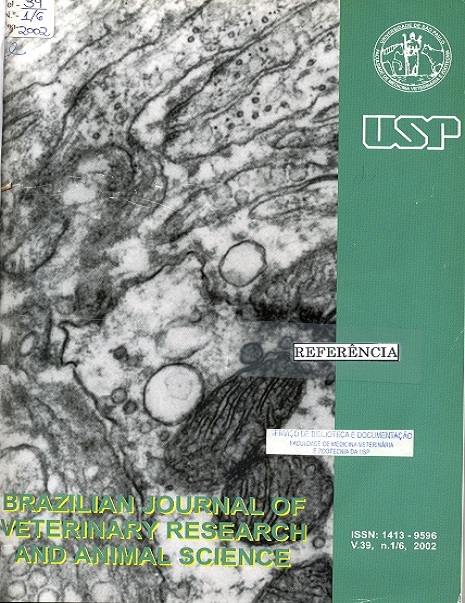Vitrification of oocytes and in vitro produced bovine embryos exposed to cytochalasin B
DOI:
https://doi.org/10.1590/S1413-95962002000500008Keywords:
Bovine, Cytochalasin B, EmbryosAbstract
In this study, the influence of cytochalasin B on the survival and development after vitrification of oocytes and in vitro produced (IVP) bovine blastocysts was evaluated. In the Experiment I, 956 oocytes were matured for 22h and were immediately vitrified (Vitri treatment) or exposed for 15-20 minutes, to 7.5µg/ml (CB7.5Vitri treatment) or 45µg/ml (CB45Vitri treatment) cytochalasin B solutions, before vitrification. After 30 seconds of exposure to SV1 [400µl TCM-Hepes with 10% fetal serum (SF), 50µl ethylene glycol (EG) and 50µl DMSO], and 20 seconds to SV2 (300µl trehalose 1,0M + 20% SF, 100µl EG and 100µl DMSO) solutions, the oocytes were vitrified in Open Pulled Straws (OPS). The rewarming was performed at 37-38ºC in two steps of 5 minutes each, into 0.3 and 0.15M trehalose solutions, respectively. There was no difference (P>;0.05) in the cleavage and embryo rates between Vitri, Cito7.5Vitri and Cito45Vitri treatments, which were inferior to control group (P;0.05), which were lower than those observed in the Control group (P<0.05). The results show that, independently of dose studied (7.5 or 45mg/ml), cytochalasin B has not a beneficial effect to the vitrification of oocytes and IVP bovine blastocysts.Downloads
Downloads
Published
2002-01-01
Issue
Section
UNDEFINIED
License
The journal content is authorized under the Creative Commons BY-NC-SA license (summary of the license: https://
How to Cite
1.
Mezzalira A, Viera AD, Barbieri DP, Machado MF, Thaler Neto A, Bernadi ML, et al. Vitrification of oocytes and in vitro produced bovine embryos exposed to cytochalasin B. Braz. J. Vet. Res. Anim. Sci. [Internet]. 2002 Jan. 1 [cited 2025 Apr. 5];39(5):260-5. Available from: https://www.revistas.usp.br/bjvras/article/view/5958





